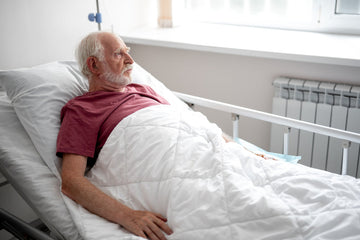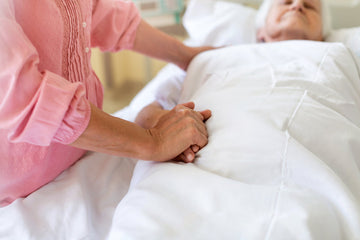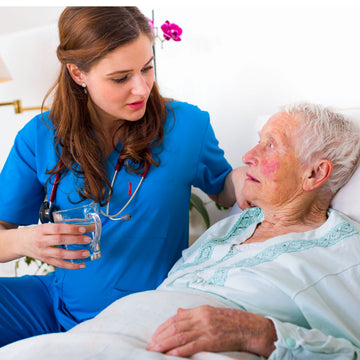
Bedsores, also known as pressure ulcers or pressure injuries, are a common concern for individuals with limited mobility. These painful sores develop when prolonged pressure on the skin restricts blood flow, leading to tissue damage. However, with vigilance and proactive care, caregivers can play a crucial role in preventing bedsores and promoting healing. In this blog, we'll delve into the early signs of bedsores and how caregivers can take action to prevent them.
Early Signs of Bedsore
Early detection is key to preventing further complications. Here are the early warning signs caregivers should watch out for:
- Discoloration: Look for unusual redness or darkening of the skin. In individuals with darker skin tones, the affected area may appear purple or bluish. This discolouration is often a sign of impaired blood flow to the area.
- Skin changes: The skin texture may change, becoming firmer or boggy (having a soft, doughy feeling) than usual. Early on, the skin might feel slightly cooler than surrounding areas.
- Warmth or coolness: As the pressure sore progresses, the affected area may feel warmer than surrounding tissues due to inflammation. In some cases, the skin might feel cooler due to damaged blood vessels.
- Swelling or edema: The affected area might appear swollen and puffy due to fluid buildup beneath the skin.
- Tenderness or pain: The individual may express discomfort or pain when the area is touched, or they might flinch when you try to move them. Pay attention to any nonverbal cues of discomfort, such as restlessness or facial grimacing.
- Blisters or open sores: In more advanced stages, blisters or open sores may develop. The blisters may be filled with clear fluid, blood, or pus. Pay close attention to any drainage from the sores, which could indicate an infection. Be aware that some people, especially those with diabetes or neuropathy, may not feel pain even in the later stages of a bedsore. This is why regular skin checks are so important.

Preventive Measures for Pressure Sore
- Repositioning: Regularly reposition the individual to relieve pressure. Aim for repositioning every two hours in bed and every hour in a wheelchair.
- Skin care: Keep the skin clean and dry. Use gentle cleansers and pat the skin dry to avoid friction. Apply a moisturizing lotion to keep the skin hydrated.
- Pressure-relieving surfaces: Utilize specialized mattresses, cushions, or overlays designed to distribute pressure evenly.
- Nutrition and hydration: Ensure the individual receives a balanced diet rich in protein and vitamins to promote skin health. Encourage adequate fluid intake to maintain skin elasticity.
- Bedsore gel: Apply a specialized bedsore gel like Soreze Bed Sore Prevention Gel to areas prone to pressure sores. The gel creates a protective barrier, reducing friction and shear forces. Soreze's unique formula also helps nourish and hydrate the skin, promoting healing.

Soreze Bed Sore Prevention Gel: Your Ally in Prevention
Soreze Bed Sore Prevention Gel is a powerful tool in your bedsore prevention kit. Its gentle and effective formula is enriched with natural ingredients that soothe and protect the skin. The gel's moisturizing properties help maintain skin integrity, reducing the risk of breakdown. With regular use, Soreze can contribute to a healthier skin environment and reduce the likelihood of pressure sores.
Disclaimer:
This blog is intended for informational purposes only and should not be considered a substitute for professional medical advice. Consult a healthcare professional for diagnosis and treatment recommendations regarding bedsores.
Remember, early detection and proactive care are crucial in preventing bedsores. By incorporating these preventive measures into your caregiving routine, you can significantly reduce the risk of bedsores and promote the well-being of your loved one. Consider using Soreze Bed Sore Prevention Gel to provide an extra layer of protection and support for healthy skin.



